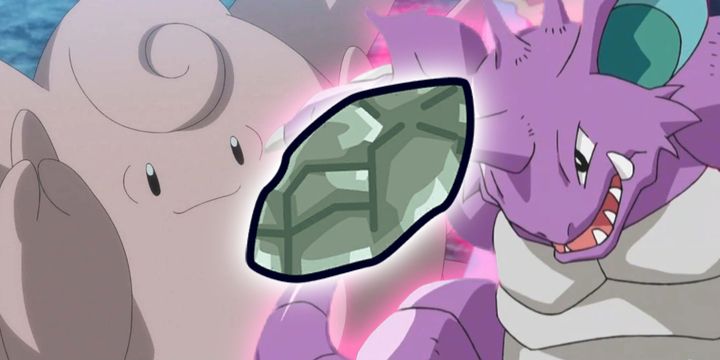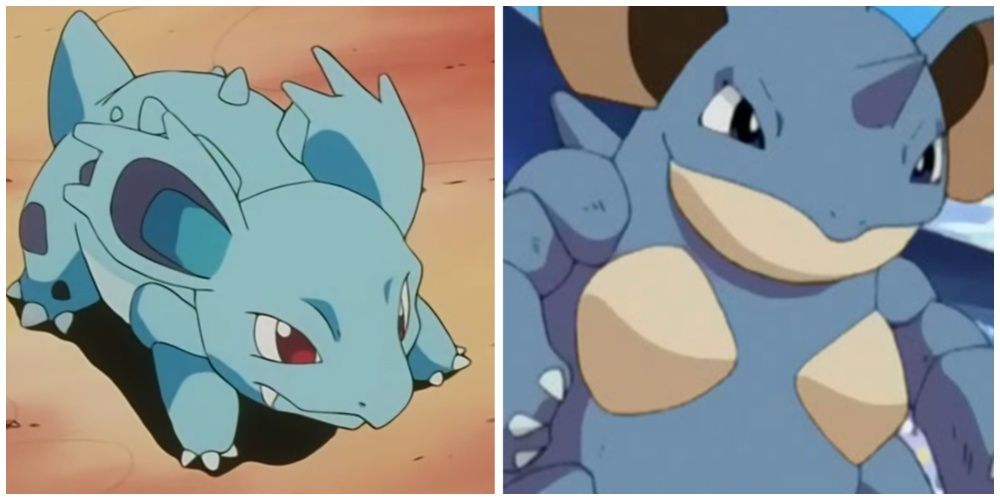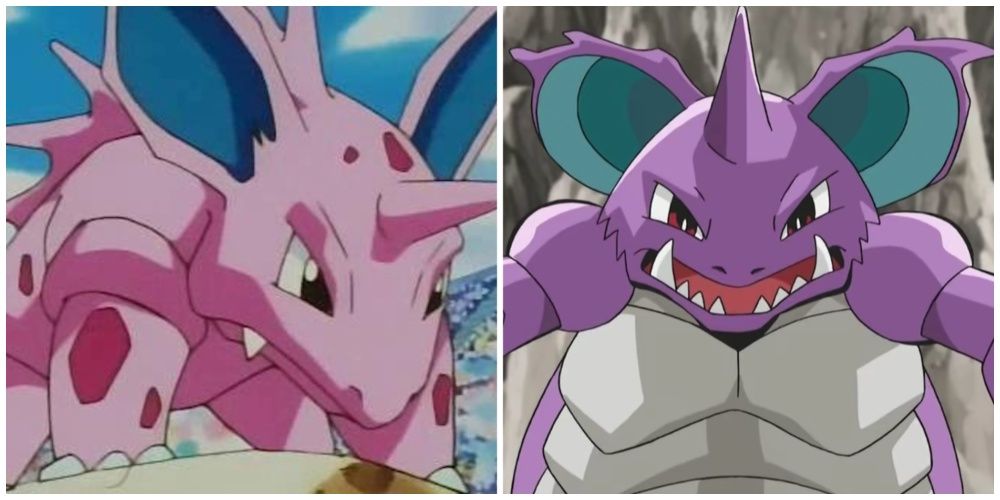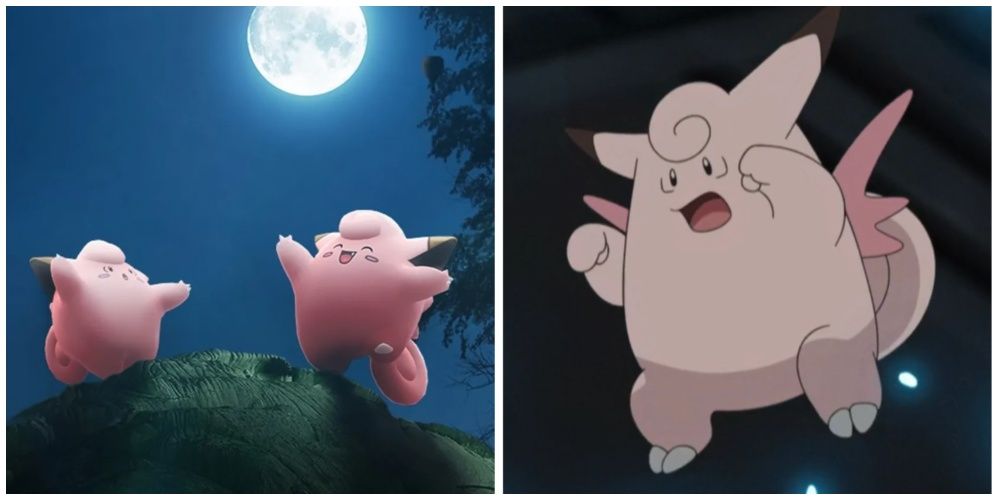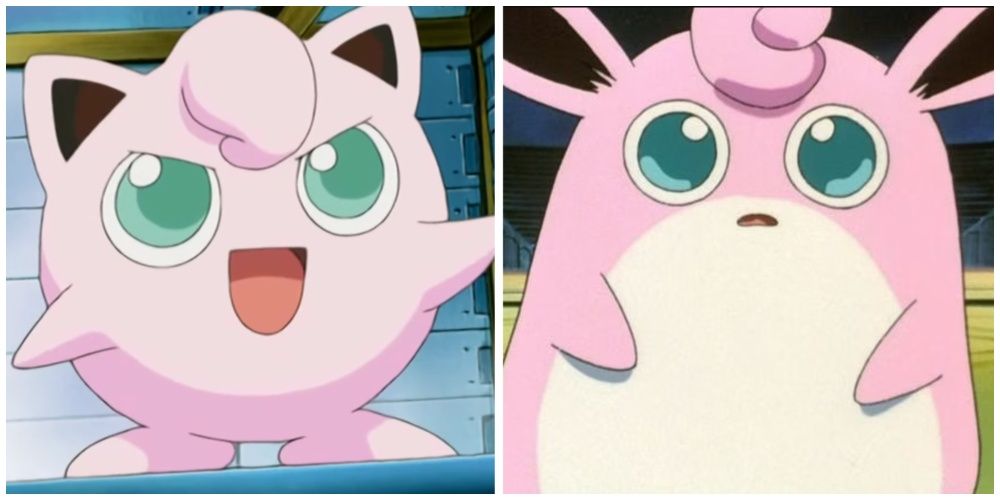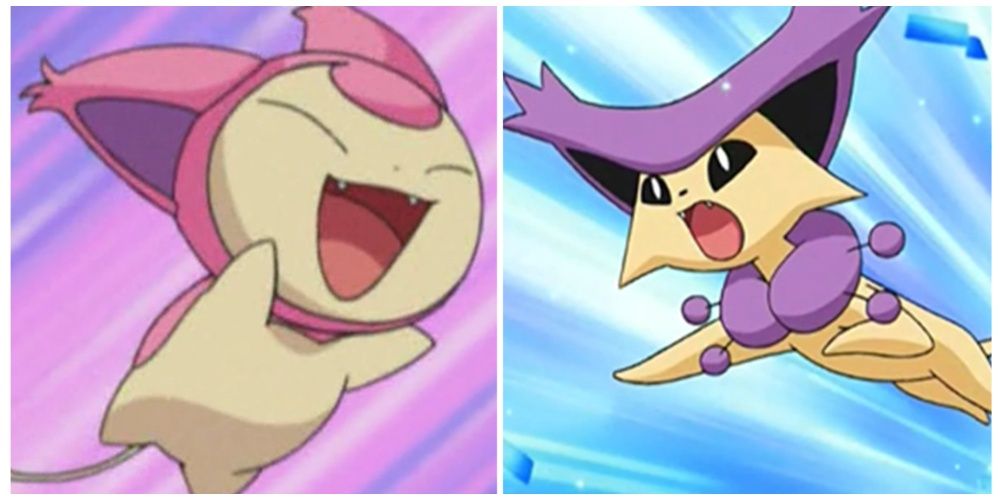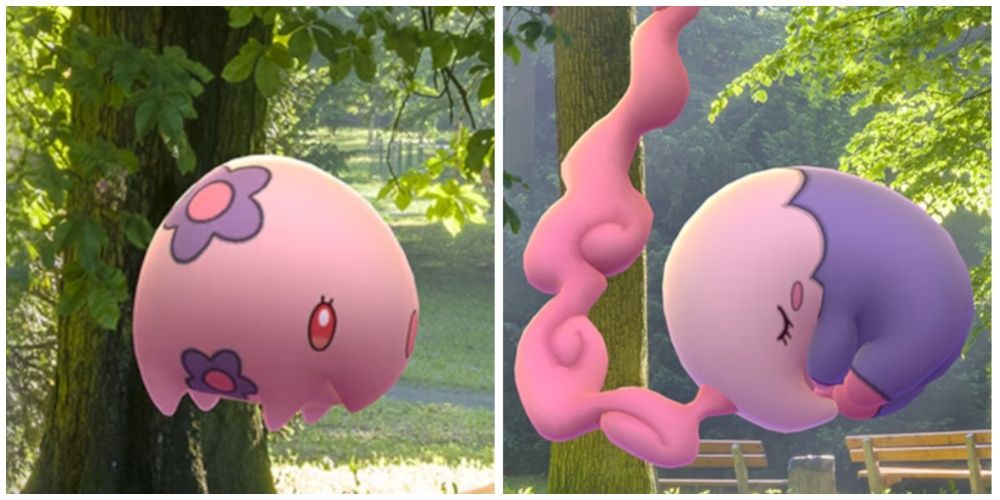There’s no end in sight for Pokémon, and the core series has delivered groundbreaking adventures for close to three decades. Pokémon’s basic principles remain the same as intrepid Pokémon Trainers do whatever it takes to become a Pokémon Master and fill their Pokédexes to their hearts’ content. The franchise has come a long way since the Generation I antics from the original Pokémon Blue, Red, and Yellow, but particular gameplay mechanics, like evolution, have been essential from the start. Pokémon evolve in a multitude of ways, whether it’s through battle experience, environmental conditions, or the help of special Evolutionary Stones. The Moon Stone is a rare relic that’s been around as early as Generation I, but it’s often difficult to determine which Pokémon it can help grow.
Other Evolutionary Stones like the Fire Stone, Water Stone, and Leaf Stone are much more popular and clearly correspond to Pokémon that are the same type. There are no Moon-Type Pokémon, which turns Moon Stone evolutions into more of an experimental procedure that’s easy for players to overlook. Pokémon would benefit from greater Moon Stone incorporation, even if this were to mean new evolutions for old Pokémon. Across the franchise, there are currently 6 Pokémon that grow and reach new heights through the Moon Stone’s evolutionary powers.
6 Nidorina
Nidoqueen
The first generation of Pokémon games are much simpler than their successors, but there are still glimpses of more complex concepts that would be further explored in later games. In Generation I, Nidoran is the only gendered Pokémon. This results in Nidoran evolving into either Nidorino, the male version, or Nidorina, its female counterpart. Nidoran evolves into Nidorina at Level 16, but its next evolutionary form, Nidoqueen, requires the Moon Stone.
Nidorina is a Poison-Type Pokémon, but since there’s no Poison Stone, this particular Pokémon benefits from interaction with a Moon Stone. Nidoqueen is a dangerous behemoth, especially back in Generation I. The Pokémon benefits from upgraded stats and more impressive techniques, but Nidoqueen also becomes a dual Poison- and Ground-Type Pokémon. Nidoqueen doesn’t lose any of Nidorina’s poison proficiency. Even better, the advent of Ground-Type attacks helps bring out the best in Nidoqueen.
5 Nidorino
Nidoking
Nidorino is one of the original 151 Pokémon that came out of Generation I’s Kanto region. Nidorino is a ferocious Poison-Type Pokémon that can deal serious damage if any of these attacks properly connect with their target. Players can find Nidorino in its natural habitat, the wild, in the game’s Safari Zone. Alternatively, players can acquire a Nidorino if they bring their Nidoran up to Level 16.
Continued battle experience will make Nidorino stronger, but it won’t trigger the Pokémon’s final form, Nidoking. Nidorino isn’t necessarily the first Pokémon that comes to mind when the player acquires a Moon Stone. Nevertheless, this unlikely pairing pushes Nidorino beyond his limits and into the Poison- and Ground-Type Nidoking. This broader typage helps Nidoking dominate in battle. This makes it somewhat surprising that none of the later Pokémon games feature a new form through the use of the Moon Stone. Nidoking is one of Generation I’s finest Pokémon, and it’s unfortunate that it’s become an increasing afterthought in later games.
4 Clefairy
Clefable
Pokémon would likely be very different if Ash’s partner in the anime was Clefairy, instead of Pikachu, as originally planned. Pikachu proved to be a more versatile figure who appeals to boys and girls alike. Nevertheless, Clefairy still gets a lot of attention in both the original video games as well as Pokémon’s accompanying manga series. Clefairy is the Pokémon most commonly associated with the Moon Stone. The sixth episode of the anime, “Clefairy and the Moon Stone,” is specifically devoted to the relationship between this Pokémon and the special Evolutionary Stone. Clefairy was a Normal-Type Pokémon through the first five generations of the series until it was later classified as a Fairy-Type Pokémon. However, Clefairy’s Normal-Type status is what players typically connect to Moon Stone evolutions.
While it’s not a direct connection, it’s easy to see how the healing powers of the moon could be viewed as a link to Normal-Type Pokémon like Clefairy. Clefairy’s exposure to the Moon Stone will evolve the Pokémon into Clefable. Generation II would expand on Clefairy and Clefable’s evolutionary line with a Baby Pokémon form, Cleffa, who evolves into Clefairy due to a high friendship level. It’s curious that the Moon Stone isn’t a crucial tool for Cleffa, and it’s even safe to say that any future Clefairy evolutions will also stray away from the Moon Stone approach due to the Pokémon’s current Fairy-Type status.
3 Jigglypuff
Wigglytuff
Jigglypuff is hardly the strongest Pokémon, but it’s found a dedicated following through a hilarious running gag in the anime and prominent placement in Nintendo’s Super Smash Bros. crossover fighting series. The Kanto region’s Jigglypuff and Clefairy feel like they’re cut from the same cloth. They’re both Gen I Normal-Type Pokémon who become dual Normal- Fairy-Type hybrids as of Generation VI. Not to mention, they also possess a Gen II pre-evolutionary form that evolves through a high friendship factor. These similarities even include Jigglypuff’s reliance on the Moon Stone in order to become Wigglytuff.
Wigglytuff becomes even more elastic and lightweight than Jigglypuff, which allows the Pokémon to float to great heights. Perhaps this gravity-defying act is the Pokémon’s attempt to reach the moon itself, which has played an important role in the Pokémon’s life. Most recently, Generation IX’s Pokémon Scarlet and Violet introduce time-displaced Paradox Pokémon. Among them, Scream Tail is meant to have ties with Jigglypuff. Scream Tail is still a new revelation, but it’s entirely possible that the next mainline Pokémon game will use the Moon Stone to push Scream Tail to greater heights, just like it aids Jigglypuff.
2 Skitty
Delcatty
The first two generations of Pokémon games establish an excellent foundation for the series that’s taken to even greater heights in Generation III’s Hoenn region. Generation III added 135 new Pokémon to the mix, a huge amount that’s nearly on par with the original games. Pokémon that bear a resemblance to cute pets are usually some of the most popular creatures. Among them, Skitty, a cat Pokémon, is often deemed one of the cutest. Skitty is an innocent Normal-Type Pokémon who gets easily distracted and is prone to chase its own tail for stimulation. Combat isn’t Skitty’s forte, so it makes sense that it would evolve through the use of the Moon Stone rather than battle experience.
Skitty’s Moon Stone exposure results in Delcatty, an even fancier feline than before. Delcatty is more extravagant than Skitty, but it’s still not the best Pokémon to storm the Elite Four or Pokémon League. Delcatty is prone to sleep wherever it wants and it’s made a name for itself in Pokémon Beauty Pageants due to its style and luxurious fur. Delcatty is a common Pokémon with female Trainers, and it’s long overdue for an update after generations of dormancy.
1 Munna
Musharna
Pokémon‘s Generation V is a serious turning point for the franchise that attempts to begin anew with a Pokédex of 156 completely new creatures, rather than a reliance on past favorites. Pokémon Black and White, as well as their direct sequels, are some of the franchise’s most popular releases. Even today, their Unova region remains a fan favorite locale. Munna is a tiny pink Pokémon who floats through the air and sustains itself through eating the dreams of people and other Pokémon. Munna’s dream-eating compulsion pushes the Pokémon into Psychic-Type territory, but it’s also a surprising creature who evolves through the use of the Moon Stone into Musharna.
Musharna doesn’t stray too far from Munna’s roots, but the Pokémon becomes even more adept at its dream-eating skills. Using the pink mist that emanates from itself, Musharna can manipulate the mist to resemble fleeting images from the dreams that it’s consumed. It’s only appropriate that one of the new Pokémon introduced in Generation V would make use of the Moon Stone, but it’s genuinely surprising that the evolution tool has been dormant since then. Each new Pokémon game makes the Moon Stone feel like more of an afterthought, but there are still plenty of exciting places that franchise could take the Evolutionary Stone in the future.
